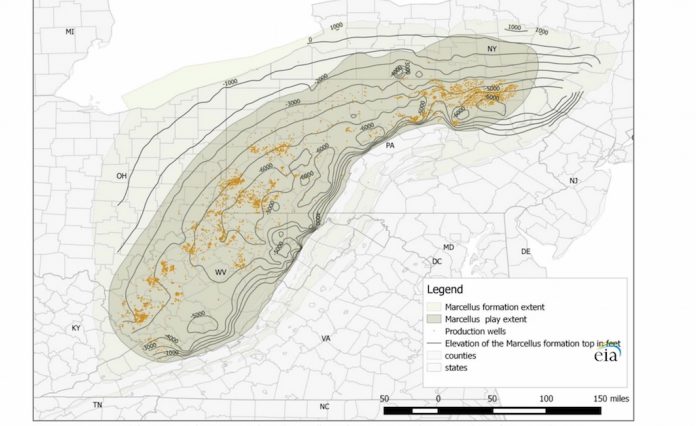
WASHINGTON — Stronger oil and natural gas prices, combined with development of shales and low permeability formations, lifted U.S. crude oil and natural gas proved reserves to record levels in 2017.
That’s according to U.S. Crude Oil and Natural Gas Proved Reserves, Year-End 2017, released by the U.S. Energy Information Administration (EIA).
Proved reserves of crude oil in the United States increased 19.5 percent from year-end 2016, rising to 39.2 billion barrels and surpassing the previous peak level of U.S. crude oil proved reserves of 39.0 billion barrels set in 1970.
Producers in Pennsylvania added 28.1 trillion cubic feet (Tcf) of natural gas proved reserves, the largest net increase of all states in 2017.
Proved reserves of natural gas increased 36.1 percent to 464.3 Tcf at year-end 2017 and breaking a 2014 record for total natural gas proved reserves.
Both U.S. proved reserves of crude oil and natural gas are approximately double their levels from a decade ago.
Natural gas
The annual average spot price for natural gas at Louisiana’s Henry Hub increased 21 percent in 2017. Natural gas spot prices throughout 2017 (at the Henry Hub) did not vary much from the annual average price of $2.99 per million British thermal units (MMBtu).
The U.S. total net increase in proved reserves of natural gas was 123.2 trillion cubic feet, or 36.1 percent, for a total of 464.3 trillion cubic feet.
U.S. production of natural gas increased 4 percent from 2016.
Marcellus shale boom
Producers in Pennsylvania added 28.1 trillion cubic feet (Tcf) of natural gas proved reserves, the largest net increase of all states in 2017, as a result of increased prices and development of the Marcellus and Utica shale plays.
After regions in Texas and Louisiana, the fourth- and fifth-largest net increases in natural gas proved reserves occurred in West Virginia and Ohio (11.1 Tcf, each), respectively, as a result of development of the Marcellus and Utica shale plays.
The share of natural gas proved reserves from shale increased from 62 percent of total U.S. natural gas proved reserves in 2016 to 66 percent in 2017.
Estimated production of natural gas from shale increased 9 percent — from 17.0 Tcf in 2016 to 18.6 Tcf in 2017.
Extensions and discoveries of natural gas reserves were highest in Pennsylvania and West Virginia at 21.6 Tcf and 13.7 Tcf, respectively. These were from extensions in the Marcellus shale play, the largest natural gas shale play in the United States by volume of reserves.
Crude oil
The annual average spot price for West Texas Intermediate (WTI) crude oil at Cushing, Oklahoma increased 20 percent in 2017. On Dec. 29, 2017, the WTI spot price exceeded $60 per barrel for the first time since June 2015.
The U.S. total net increase in proved reserves of crude oil and lease condensate was 6.8 billion barrels, or 19.2 percent, for a total of 42.0 billion barrels.
U.S. production of crude oil and lease condensate increased by 6 percent from 2016.









